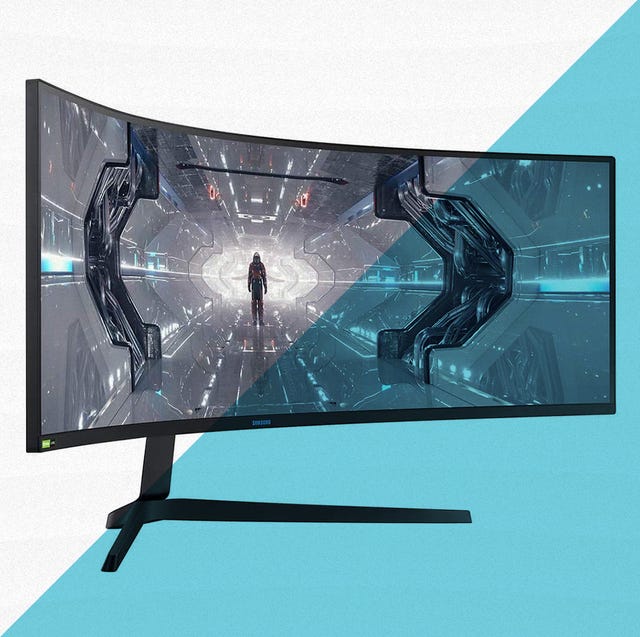Is a Curved Monitor Easy to Read on

Staff, Courtesy of Samsung
In my former life, I was a media department manager and a video editor. Spending hours a day in the editing bay, a wide monitor was a must-have to ensure I didn't miss any mistakes (like the coffee cup and plastic water bottles visible in season 8 of the fictional-but-presumably medieval Game of Thrones). While my work wasn't nearly that important, nor my mistakes would have been as monumental, it still would have been a lot easier to work with a curved monitor.
That's because a curved monitor bends the screen's edges to provide a wider field of view. And that's not the only benefit. "Curved monitors are ergonomic because there is less cervical spine rotation needed to easily view the monitor," explains Dr. Allen Conrad, BS, DC, CSCS at Montgomery County Chiropractic Center in North Wales, PA. "As the monitor is curved at the ends, it allows a broader vision area."
And as a result, Conrad says curved monitors help to reduce neck and shoulder spasm. "Consumers should consider a curved monitor, due to the many benefits they offer," he explains. "These benefits may lead to improved work efficiency, increased workspace, and improved posture due to its ergonomic design."
They also look really good on your desk. Although I rarely edit videos these days, all of my monitors (as well as my back-up monitors) are curved. In addition to reducing neck and shoulder pain, I've noticed that I'm less distracted when I'm working, and my eyes don't hurt as much. That's consistent with a Harvard Med School study that found eyestrain, blurred vision, and difficulty focusing was less likely to be reported by subjects with curved monitors compared to those who used flat monitors.
What to Consider
As with any monitor, size is a consideration. Fortunately, curved monitors are as small as 24 inches, and as wide as 49 inches. So, even if you're working in a space as small as a closet, you can find a curved monitor to fit your needs. One advantage of a small monitor is that it doesn't take up a lot of space, so there's plenty of room on your desk for other items.
I like to put my monitors on risers so they're almost eye level. One lesson I learned early on was that monitors (even the small ones) on wide V-shaped stands don't sit well on my sleek, fashionable risers. The feet on most of my curved monitors are 18 to 19 inches wide and 6 to 8 inches in depth, which has led to some creative alternatives, like using an adjustable standing desk riser on its lowest setting.
A wider monitor can provide plenty of screen real estate, allowing you to open and view several documents and/or apps at once. It can also create a more immersive experience when you're playing games or watching videos.
Resolution, refresh rate, and response time are also important factors to consider, so we list those in the specs for each curved monitor.
How I Selected
I've tested and written about TVs, tech, and entertainment products for a variety of digital publications, including Tom's Guide, Bob Vila, The Spruce, Realtor.com, Apartment Therapy, and The Daily Beast. This list includes curved monitors that I've tested, as well as those highly recommended by the experts. I also researched consumer reviews and other trusted sources to find the top options across a range of prices, styles, and sizes. I then selected the models below based on their design, performance, and value.
This content is created and maintained by a third party, and imported onto this page to help users provide their email addresses. You may be able to find more information about this and similar content at piano.io
Source: https://www.popularmechanics.com/technology/g37244550/best-curved-monitors/
0 Response to "Is a Curved Monitor Easy to Read on"
Post a Comment